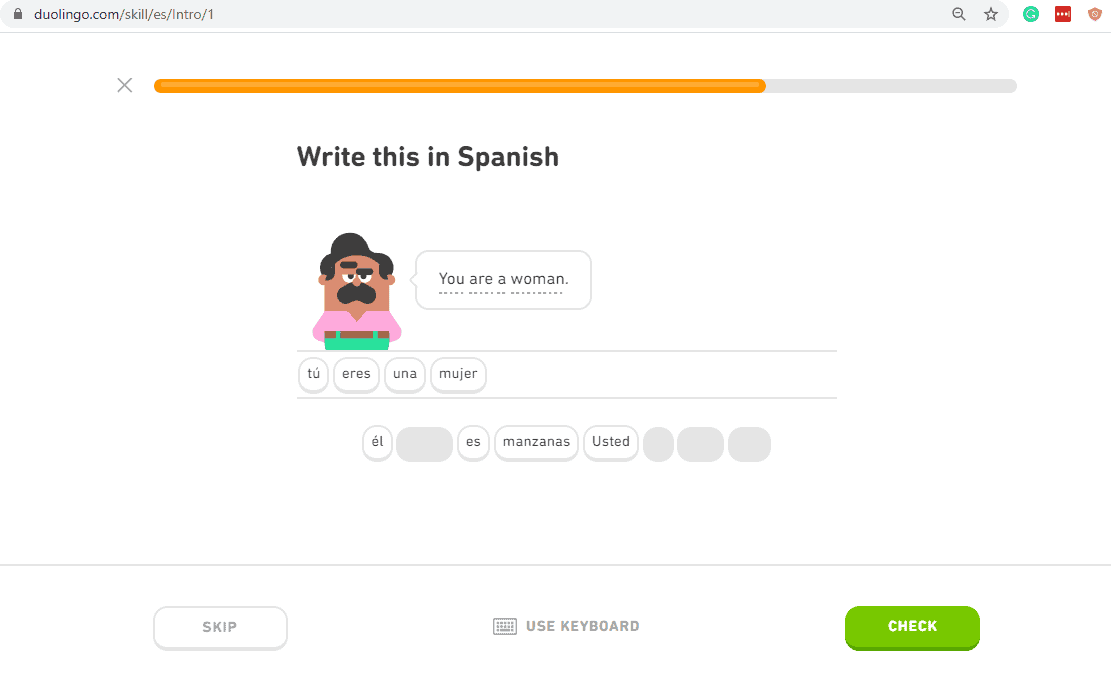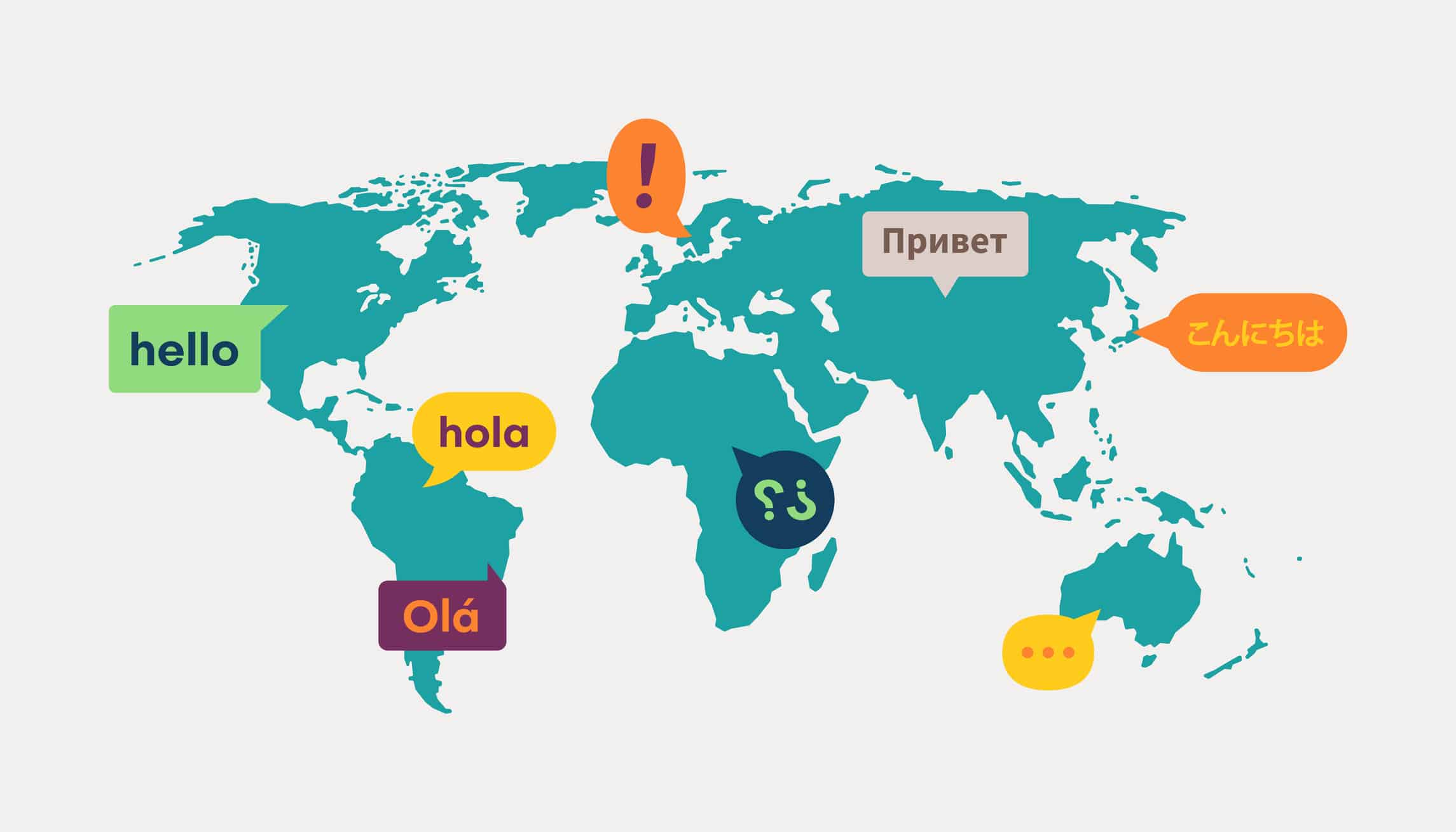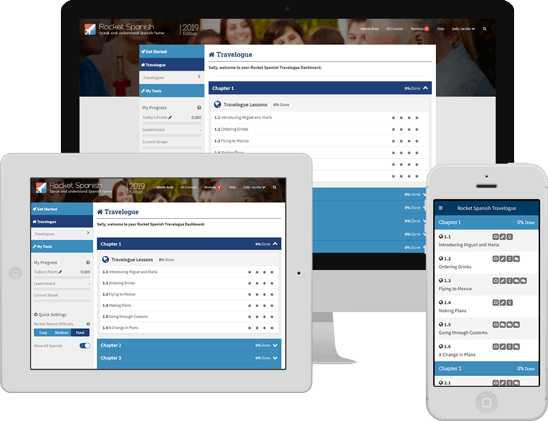
10xTravel is part of an affiliate sales network and receives compensation for sending traffic to partner sites, such as CreditCards.com. This compensation may impact how and where links appear on this site. This site does not include all financial companies or all available financial offers. Terms apply to American Express benefits and offers. Enrollment may be required for select American Express benefits and offers. Visit americanexpress.com to learn more.
Note: Some of the offers mentioned below may have changed or may no longer be available. The content on this page is accurate as of the posting date; however, some of our partner offers may have expired. You can view current offers here.
With so many things to do during your typical, everyday life, it often seems like there isn’t any time to anything new—much less to learn a new language before heading off to another country. You may have well-intended to learn a few key phrases before your trip but found yourself wheels-up before managing to download that app or crack open a dictionary.
For the modern age, the current travel situation is completely unprecedented. While we’re dealing with a sharp decrease in travel availability and a necessary eradication of non-essential trips, some of us are stuck at home when we’re, truthfully, more accustomed to being stuck on a long layover.

Here are a few of our favorite language-learning avenues that we think might be helpful and inspiring for your next trip. (Speech bubbles contain the word HELLO in eight different languages. English, Spanish, French, Japanese, German, Russian, Arabic and Swedish.)
Assuming that all is otherwise well (read: survivable) in our lives, these times of confinement have given us an opportunity to quiet down, slow down, and invest some newly-reallocated time into activities like planning future travel. Part of that may include learning a new language, and given the time and mental capacity to do so, this may be your chance to do just that. Here are a few of our favorite language-learning avenues that we think might be helpful and inspiring for your next trip.

Phone Apps
1. Duolingo

Perhaps the current most well-known household name in the language-learning software industry, Duolingo is a great place to start. Spanish, French, and German are the three most common languages to learn via Duolingo but there are also modules for languages like Arabic, Norwegian, Latin, Vietnamese, Welsh and even Navajo.
To start your Duolingo journey, you’ll first select the language that you’d like to learn. Then, you’ll tell Duolingo why you’re learning that particular language so that they can tailor the education to your needs. For example, if you’re learning the language for travel, you may not need to know the nitty-gritty of the grammar structure as much as you’ll need key phrases about hotels, flights, restaurants, money, transportation, and other travel-related things.
If you already know some of the language skills, you may test into a higher level. Duolingo keeps track of the specific skills you’ve mastered and allows you to move through different categories that are relevant to your learning. Sign up through your Facebook, Google, or email accounts and see if you can maintain a perfect streak before your trip!
2. Fluent Forever
Even though Fluent Forever is not as recognizable of a brand as Duolingo, I would give them a look if your goal is fast fluency. Using a tried and tested method of their design, Fluent Forever advertises fluency in just six months for serious and motivated language students. Currently, they offer modules for Latin American Spanish, Castillian, French, German, Italian, Portuguese, Russian, and Korean but they plan to soon offer English, Dutch, Hebrew, Arabic, Japanese, and Chinese.
Instead of breaking vocabulary down into categories like colors or shapes, they instead break it down into associated words. Fluent Forever uses the example of clustering “red – apple – fruit” instead of “red – orange – yellow” because the former association aligns well with the way our brains naturally learn and remember things. Additionally, you’ll be able to associate vocabulary and pronunciation with pictures as well as written or spoken texts.
Another thing that I really like about Fluent Forever is their emphasis on phonetics and mouth training. I respect the importance of knowing how to teach my mouth how to make sounds that simply don’t exist in my native language. This is every bit as important as vocabulary and grammar.

Fluent Forever is a subscription-based, app-based interface. You may begin with a 14-day trial and sign up for monthly, six-month, one-year, or two-year single-language subscriptions. Through their four-step system, you’ll first train your ears, train your vocabulary with images, learn grammar through stories, and finally speak with tutors (although this step is currently under development). If fluency is your ultimate goal, Fluent Forever is definitely a great option to monitor as they continue to grow and develop their platform.
3. Rocket
If you’re interested in delving into culture as well as linguistics, definitely consider using Rocket for your language learning needs. Rocket is an app-based platform that includes 15 different languages including both Japanese and Eigo, English, Spanish, Portuguese, German, Hindi, Russian, and even American Sign Language.

Rocket learners have access to audio lessons, voice recognition, vocabulary practice and writing practice and grammar lessons. Image Courtesy: Rocket Languages
Not only do Rocket learners have access to audio lessons, voice recognition, vocabulary practice and writing practice, but Rocket has a few extra tricks that set them apart from the standard. In addition to the expected lessons and exercises, Rocket comes with grammar lessons that allow the learner to understand the mechanisms of the language, as well as culture lessons to help the learner put the language into its greater context.
Since Rocket is an app-based interface with fully downloadable lessons, you can take Rocket with you wherever you go for a one-time payment. Even though we aren’t going many places these days, download a lesson for your daily lockdown walk around the living room!
Websites
1. italki
While module-based learning interfaces are great for many, you may be looking for an opportunity to speak to an actual human person. If you’re more of a one-on-one lesson type of student, italki is a great option for you. italki is an app- and web-based interface that allows you to connect with language teachers all around the world, set your own lesson schedule, and pay as you go.
With a repository of over 10,000 language teachers, you’ll have the ability to search for one that suits your interests and goals. To find one that fits your learning style and budget, you can watch teacher introductory videos and read student reviews before taking your pick. Then, book your lesson and connect with your teacher through the built-in video chat.
The really cool thing about italki is that since it doesn’t rely on built-in modules but on actual speakers, you can learn languages that are harder to find such as Bosnian, Icelandic, and Irish. Additionally, if you are qualified and interested in becoming a language teacher yourself, you may apply to do so here. Through italki, you have the chance to teach a language, learn a language, or both!
2. Pimsleur
Another well-known name in language learning, Pimsleur offers an impressive variety of 50+ language courses including Icelandic, Punjabi, Hebrew, Urdu, Swiss German, and even Eastern and Western Armenian. This is a great option if you’re looking for a steady repository of lessons for esoteric languages.
The Pimsleur Method is built on the tenets of recall, anticipation, vocabulary, and conversational context. By triggering areas of your brain associated with memory in more complex and applicable ways than mindless repetition, your brain can build a new foundation based on an entirely new language.
Pimsleur depends on 30-minute audio sessions and, with daily practice, claims intermediate-level language acquisition in just 30 days. You can get a free lesson through Pimsleur to check out whether or not you like it, but you also have the opportunity to return your first 30 lessons (a $150 value) within the first 30 days if you decide it’s not for you. With that, there’s no reason not to try the Pimsleur Method.
3. Rosetta Stone
This one is a bit of a throwback, but this original language-learning brand is still alive and kicking. More than twenty five years later, Rosetta Stone remains to be the gold standard of language acquisition, comprehension, and conversation for students, businesses, and individuals.
Rosetta Stone currently offers 25 language courses including American and British English, Latin American and Castilian Spanish, Mandarin, Arabic, Hindi, and Greek. New learners sign up for language courses by way of a subscription package; you may purchase three months of a single language for $11.99 per month, or you may buy access to 12 months of unlimited languages for $14.92 per month, 24 months of unlimited languages for $10.38 per month, or a lifetime of unlimited languages for just one payment of $299.
As an added bonus, Rosetta Stone is currently offering three months of free access to Rosetta Stone for Students. This offer is available to parents and teachers of K-12 students who have been affected by the COVID-19 school closures, so this is a prime opportunity to take advantage of such a great program for free!
Online Language Schools
When looking to learn a new language, there are so many apps and programs available that it can be easy to forget that local language schools exist and are often able to offer courses online. In fact, many language schools have moved completely online in order to stay open and accessible during the COVID-19 related lockdown orders.
One such school is the Whee Institute in Bogota, Colombia. While the Whee Institute offers Skype/Zoom lessons on a regular basis, they have currently moved all lessons to an online interface in order to keep everybody safe (and employed) during this time.
The Whee Institute is the fastest-growing Spanish school in Colombia and they focus their attention not only on language but on culture. When it’s open, their on-site school includes multiple levels of Spanish lessons, small group lessons, homestay accommodations, private lessons, fun activities, and budget-friendly options while still offering fair pay to their teachers.
However, you can still sign up for Skype or Zoom private and group lessons here while the physical institute is closed. We recommend starting your Spanish courses through Skype or Zoom while we are in lockdown, and then perhaps planning a trip to Colombia to continue your courses on-site when the world opens again!
Final Thoughts
If you’ve been looking for new ways to spend your time inside, travel planning can be simultaneously a nostalgic and hopeful thing to do. If you’re planning a trip to a new and exciting place, why not learn a few phrases to take along with? Check out these language-learning options, and let us know what you think about them in the comments.
New to the world of points and miles? The Chase Sapphire Preferred® Card is the best card to start with.
With a bonus of 100,000 bonus points after $5,000 in purchases in your first 3 months from account opening. , 5x points on travel booked through Chase Travel℠ and 3x points on restaurants, streaming services, and online groceries (excluding Target, Walmart, and wholesale clubs), this card truly cannot be beat for getting started!
Editors Note: Opinions expressed here are author’s alone, not those of any bank, credit card issuer, hotel, airline, or other entity. This content has not been reviewed, approved or otherwise endorsed by any of the entities included within the post.









